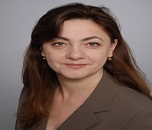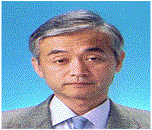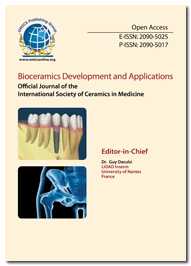Theme: Proliferating the limitations of materials
Materials Research 2017
ConferenceSeries Ltd takes the privilege to invite participants- speakers, students, delegates and exhibitors from across the globe to its flagship conference, 7th Annual Congress on Materials Research and Technology to be held during February 20-21, 2017 at Berlin, Germany. This Materials Research 2017 is unparagoned and an unmissable opportunity to engross the information and communication technologies bobbing in the modern age.
Materials Research 2017 is a special designed cluster of program that provides a common platform where industry meets academia to discuss the recent issues and happening. It serve as a bridge between researchers from academia and industry enhanced by its well organized scientific sessions, plenary lectures, poster presentations, world class exhibitions, diverse symposiums, highly enriched workshops and B2B meetings.
Berlin, Germany
Berlin is home to world orchestras, museums, renowned universities, entertainment venues and is host to many sporting events. Its urban setting has made it a sought-after location for international film productions. The annual Berlinale Film Festival is one of the highlights during February, which attracts celebrities and stars from around the world and the features previewed here are often some of the best. Which neverending nightlife, what’s better time to visit Berlin?
Why to attend
Materials Research 2017 paves a platform to globalize the research by installing a dialogue between industries and academic organizations and knowledge transfer from research to industry. Materials Research 2017 aims in proclaim knowledge and share new ideas amongst the professionals, industrialists and students from research areas of Materials Science and Nanotechnology to share their research experiences and indulge in interactive discussions and special sessions at the event.
Materials Research 2017 is a special designed cluster of program that provides a common platform where industry meets academia to discuss the recent issues and happening. It serve as a bridge between researchers from academia and industry enhanced by its well organized scientific sessions, plenary lectures, poster presentations, world class exhibitions, diverse symposiums, highly enriched workshops and B2B meetings.
Materials Research 2017 covers various aspects of Materials Science, Nanotechnology, Biomaterials, Polymers, Ceramics, Composites, Metallurgy, Materials Chemistry, Materials Physics, Energy Materials, Optical Materials, Magnetic Materials, Metals and Alloys, Smart Materials, Advanced Materials, etc.,
Track1: Material Science and Engineering
Materials Science and Engineering is an acclaimed scientific discipline, expanding in recent decades to surround polymers, ceramics, glass, composite materials and biomaterials. Materials science and engineering, involves the discovery and design of new materials. Many of the most pressing scientific problems humans currently face are due to the limitations of the materials that are available and, as a result, major breakthroughs in materials science are likely to affect the future of technology significantly. Materials scientists lay stress on understanding how the history of a material influences its structure, and thus its properties and performance. All engineered products from airplanes to musical instruments, alternative energy sources related to ecologically-friendly manufacturing processes, medical devices to artificial tissues, computer chips to data storage devices and many more are made from materials. In fact, all new and altered materials are often at the heart of product innovation in highly diverse applications. The global market is projected to reach $6,000 million by 2020 and lodge a CAGR of 10.2% between 2015 and 2020 in terms of worth. The North American region remains the largest market, accompanied by Asia-Pacific. The Europe market is estimated to be growth at a steady rate due to economic redeem in the region along with the expanding concern for the building insulation and energy savings.
Relevant Materials Science Conferences:
9th World Congress on Material Science and Engineering, June12,14 2017, Rome, Italy; 14th International Conference on Materials Science and Engineering, November 13-15, 2017 Las Vegas, Nevada, USA; 8th International Conference and Exhibition on Material Science and Engineering, May 29-31, 2017, Osaka, Japan; Polymer Science Conferences, May 8-9, 2017 Barcelona, Spain; 3rd International Conference on Smart Materials and Structures, March 20-22, 2017, Orlando, USA; 2nd International Conference on Materials Chemistry, July 13-14, 2017, Berlin, Germany; 4th Annual International Conference on Materials Science, Metal & Manufacturing (M3 2017), February 6-7, 2017, Singapore; International Conference on Materials Science and Nanotechnology (ICMSNT 2017), May 12-14, 2017, Seoul, South Korea; 28th Canadian Materials Science Conference (CMSC 2017), June 7-10, 2017, Ontario, UK; 5th International Conference on Material Science and Engineering Technology, October 29-31, 2017, Tokyo, Japan. Materials Research Society (MRS), International Union of Materials Research Societies, International Organization of Materials, Metals and Minerals Societies, Federation of European Materials Societies, European Society for Composite Materials.
Track 2: Nanotechnology
Nanotechnology is the handling of matter on an atomic, molecular, and supramolecular scale. The interesting aspect about nanotechnology is that the properties of many materials alter when the size scale of their dimensions approaches nanometers. Materials scientists and engineers work to understand those property changes and utilize them in the processing and manufacture of materials at the nanoscale level. The field of materials science covers the discovery, characterization, properties, and use of nanoscale materials. Nanomaterials research takes a materials science-based approach to nanotechnology, influencing advances in materials metrology and synthesis which have been developed in support of microfabrication research. Materials with structure at the nanoscale level o have unique optical, electronic, or mechanical properties. Although much of nanotechnology's potential still remains un-utilized, investment in the field is booming. The U.S. government distributed more than a billion dollars to nanotechnology research in 2005 to find new developments in nanotechnology. China, Japan and the European Union have spent similar amounts. The hopes are the same on all fronts: to push oneself off a surface on a growing global market that the National Science Foundation estimates will be worth a trillion dollars. The global market for activated carbon totaled $1.9 billion, in 2013, driven primarily by Asia-Pacific and North American region for applications in water treatment and air purification.
Relevant Nanotechnology Conferences:
14th International Conference on Nanomaterials and Nanotechnology, March 30- 31, 2017 Madrid, Spain;World Congress on Regulations of Nanotechnology, July 11-12, 2017 Chicago, USA; 22th International Conference and Expo on Nanoscience and Molecular Nanotechnology Nov 13-14, 2017 Lisbon, Portugal; 9th World Congress on Material Science and Engineering, June12,14 2017, Rome, Italy; Polymer Science Conferences, May 8-9, 2017 Barcelona, Spain; 17th International Conference and Exhibition on Nanomedicine and Nanotechnology in Health Care, July 24-25, 2017 Brisbane, Australia; 110th International Conference on Emerging Materials and Nanotechnology July 27-29, 2017 Vancouver, Canada; 2nd International Nanotechnology Conference & Expo, April 3-5, 2017, Dubai, UAE; 3rd Edition Nanotech Dubai 2017 Conference and Exhibition, December 05-07, 2017, Dubai, UAE; 7th International Conference on Nanotechnology: Fundamentals and Applications, August 18-19, 2017, Budapest, Hungary; 11th IEEE Nanotechnology Materials and Devices Conference, October 9-12, 2017, Toulouse, France. The Materials Research Society (MRS), The Minerals, Metals & Materials Society (TMS), The Materials Information Society (ASM International), The Semiconductor Industry Association (SIA), American Nano Society.
Track 3: Biomaterials and Healthcare
Biomaterials from healthcare viewpoint can be defined as materials those possess some novel properties that makes them appropriate to come in immediate association with the living tissue without eliciting any adverse immune rejection reactions. Biomaterials are in the service of mankind through ancient times but subsequent evolution has made them more versatile and has increased their usage. Biomaterials have transformed the areas like bioengineering and tissue engineering for the development of strategies to counter life threatening diseases. These concepts and technologies are being used for the treatment of different diseases like cardiac failure, fractures, deep skin injuries, etc. Research is being performed to improve the existing methods and for the innovation of new approaches. With the current progress in biomaterials we can expect a future healthcare which will be economically feasible to us. Equipment and consumables was worth US$ 47.7 billion in 2014 and is further expected to reach US$ 55.5 billion in 2020 with a CAGR (2015 to 2020) of 3%. The dental equipment is the fastest growing market due to continuous technological innovations. The overall market is driven by increasing demand for professional dental services and growing consumer awareness. The major players in the Global Dental market are 3M ESPE, Danaher Corporation, Biolase Inc., Carestream Health Inc., GC Corporation, Straumann, Patterson Companies Inc., Sirona Dental Systems Inc., Planmeca Oy, DENTSPLY International Inc. A-Dec Inc
Relevant Biomaterials Conferences:
2nd Annual Conference and Expo on Biomaterials, March 27-28 2017, Madrid, Spain; 9th World Congress on Material Science and Engineering, June12-14 2017, Rome, Italy4th Annual Congress and Expo on Biofuels and Bioenergy April 27-28, 2017 Dubai, UAE; 7th International Congress on Biofuels and Bioenergy ,October 2-4, 2017 Toronto, Canada; Polymer Science Conferences, May 8-9, 2017 Barcelona, Spain; 2nd International Conference on Biochemistry Sep 21-22, 2017 Macau, Hong Kong; 10th World Biomaterial Congress, May 17-22 2017, Montreal, Canada; 18th International Conference on Biomaterials and Nanomaterials, September 8-9 2017, Singapore; 18th International Conference on Biomaterials Engineering, May 19-20 2017, Berlin, Germany; 11th International Conference on Biomaterials and Nanotechnology, June 5-9 2017, Perguia, Italy; 6th International Conference on Mechanics of Biomaterials and Tissues, December 6-10 2017, Hawaii, USA. Canadian Biomaterials Society, Swiss Society for Biomaterials, UK Society for Biomaterials, European Society for Biomaterials, Australasian Society for Biomaterials and Tissue Engineering.
Track 4: Materials in Industry
Material science has a wider range of applications which includes ceramics, composites and polymer materials. Bonding in ceramics and glasses uses both covalent and ionic-covalent types with SiO2 as a basic building block. Ceramics are as soft as clay or as hard as stone and concrete. Usually, they are crystalline in form. Most glasses contain a metal oxide fused with silica. Applications range from structural elements such as steel-reinforced concrete, to the gorilla glass. Polymers are also an important part of materials science. Polymers are the raw materials which are used to make what we commonly call plastics. Specialty plastics are materials with distinctive characteristics, such as ultra-high strength, electrical conductivity, electro-fluorescence, high thermal stability. Plastics are divided not on the basis of their material but on its properties and applications. The global market for carbon fiber reached $1.8 billion in 2014, and further the market is expected to grow at a five-year CAGR (2015 to 2020) of 11.4%, to reach $3.5 billion in 2020. Carbon fiber reinforced plastic market reached $17.3 billion in 2014, and further the market is expected to grow at a five-year CAGR (2015 to 2020) of 12.3%, to reach $34.2 billion in 2020. The competition in the global carbon fiber and carbon fiber reinforced plastic market is intense within a few large players, such as Toray Toho, Mitsubishi, Hexcel, Formosa, SGL carbon, Cytec, Aksa, Hyosung, Sabic, etc.
Relevant Industrial Materials Conferences:
3rd International Conference and Expo on Ceramics and Composite Materials June 29-30, 2017 Madrid, Spain; 3rd International Conference on Smart Materials & Structures March 20-22,2017 Orlando, FL, USA; 10th International Conference on Advanced Materials and Processing August 16-17 Edinburgh, Scotland; 9th World Congress on Material Science and Engineering, June12-14 2017, Rome, Italy; Polymer Science Conferences, May 8-9, 2017 Barcelona, Spain; 3rd International Conference on Smart Materials & Structures, March 20-22 2017, Orlando, USA; 13th International Conference and Exhibition on Materials Science and Engineering November 13-15, 2017 Las Vegas, Nevada, USA; 18th International Conference on Ceramic Science and Technology, June 06-07 2017, New York, USA; 19th International Conference on Composite Structures, September 5-9 2017, Porto, Portugal; 29th International Symposium on Polymer Analysis and Characterization; June 12-15 2017, Singapore. American Ceramic Society, British Composites Society, European Ceramic Society, European Polymer Federation, European Society for Composite Materials.
Track 5: Materials Chemistry
Materials chemistry involves the synthesis and study of materials that have interesting and potentially useful electronic, magnetic, optical, and mechanical properties. Material chemistry is one of the most talked topics in the last few years. They are the new branch of materials science which take advantage of new developments in chemistry. In fact, chemistry may provide a complete new board of materials for materials scientists and engineers to use. Chemistry began, and largely continues today, to be inextricably associated with preparing, processing, and utilizing materials. Much of the focus of materials chemistry in discovering and developing materials that may be exploited for desired applications. Today, many materials chemists are synthesizing functional device materials, and the discipline is often seen as directed towards producing materials with function—electrical, optical, or magnetic. Material chemistry is involved in the designing and processing of materials. Global market for catalysts is expected to reach $28.5 billion by 2020, growing at a CAGR (2015 to 2020) of over 3%. Asia-Pacific is having the largest market for catalysts accounting for more than 35% share. Major players for Catalysts are Albemarle, Arkema, BASF, Chevron, Clariant, Dupont, Zeolyst International and others.
Relevant Materials Chemistry Conferences:
9th World Congress on Material Science and Engineering, June12-14 2017, Rome, Italy; 2nd International Conference on Materials Chemistry, July 13-14 2017, Berlin, Germany; 2nd World Congress on Polymer Science and Engineering May 8-9, 2017 Barcelona, Spain; Polymer Science Conferences, May 8-9, 2017 Barcelona, Spain; World Congress on Plasma Chemistry November 13-14, 2017 Lisbon, Portugal; International Conference on Advanced Materials and Processing August 16-17 Edinburgh, Scotland; 13th International Conference on Materials Chemistry, July 10-13 2017, Liverpool, UK; 5th Zing Polymer Chemistry Conference, August 5-8 2017, Dublin, Ireland; 5th Workshop on Progress in Trace Metal, September 4-7 2017, Gdansk, Poland; 25th International Materials Research Congress, August 14-19 2017, Cancun, Mexico; Symposium on Organic Chemistry of Sulfur, July 24-29 2016, Jena, Germany. Canadian Society for Chemistry, American Composites Manufacturers Association, European Federation of Corrosion, International Union of Crystallography, International Magnesium Association.
Track 6: Materials Physics
Material physics is the application of physics to describe the physical properties of materials. It is a combination of physical sciences such as solid mechanics, solid state physics, and materials science. Materials physics is considered a subset of condensed matter physics and applies fundamental condensed matter concepts to complex multiphase media. They have a wide usage in various fields which includes the development of Optoelectronic Materials and Devices and make use of quantum dots which are prevalent in semiconductors. A wide spectrum of topics constitutes material physics which are Photocatalysis, laser physics, particle physics and analytical physics. The market for printable or potentially printable photovoltaic is expected to rise from 260 million euros (2011) to roughly 5.7 billion euros by 2021. The global market for semiconductor component market reached $335.8 billion in 2014, further during the forecasted period from 2015 to 2020; the market is expected to reach $593.6 billion by 2020 at a five year CAGR of 10.1%. The memory products continue to drive the overall market besides the micro components, ICs, discrete and optical products. he competition in the global semiconductor market is intense within a few large players, such as, AMD, Amkor, Broadcom, Cabot Microelectronics, Elpida, Fairchild, Freescale, Fujitsu, Global Foundries, Infineon, Intel, Marvell, Media Tek, Micron, NEC, NVIDIA, NXP, Qualcomm etc.
Relevant Materials Physics Conferences:
2nd International Conference on Quantum Physics and Nuclear Energy May 15-16, 2017 Munich, Germany; 2nd International Conference on Physics Aug 28-30, 2017 Brussels, Belgium; 3rd International Conference and Exhibition on Theoretical and Condensed Matter Physics October 19-21, 2017 New York, USA; Polymer Science Conferences, May 8-9, 2017 Barcelona, Spain; 2nd International Conference on Quantum Physics and Nuclear Engineering, May 15-17 2017, Munich, Germany;International Conference on Atomic and Nuclear Physics November 17-18, 2016 Atlanta, Georgia, USA; 8th International Conference on Materials Science and Condensed Matter Physics, September 12-16 2017, Chisinau, Republic of Moldova; 11th International Conference on Physics of Advanced Materials, September 8-14 2017, Napoca, Romania; 33rd International Conference on the Physics of Semiconductors, July 31- August -5, 2017 Beijing, China; 35th International Congress on Applications of Lasers & Electro-Optics, October 16-20 2017, San Diego, USA. International Union of Pure and Applied Physics (IUPAP), Materials Research Society (MRS), American Institute of Physics (AIP), European Physical Society, Physical Society of Germany (DPG).
Track 7: Energy Materials
Different geophysical and social pressures are providing a shift from conventional fossil fuels to renewable and sustainable energy sources. We must create the materials that will support emergent energy technologies. Solar energy is a top priority of the department, and we are devoting extensive resources to developing photovoltaic cells that are both more efficient and less costly than current technology. We also have extensive research around next-generation battery technology. Materials performance lies at the heart of the development and optimization of green energy technologies and computational methods now plays a major role in modeling and predicting the properties of complex materials. The global market for supercapacitor is expected to grow from $1.8 billion in 2014 to $2.0 billion in 2015 at a year-on-year (YOY) growth rate of 9.2%. In addition, the market is expected to grow at a five-year CAGR (2015 to 2020) of 19.1%, to reach $4.8 billion in 2020. The competition in the global super capacitor market is intense within a few large players, such as, AVX Corp., Axion Power International, Inc., Beijing HCC Energy Tech. Co., Ltd., CAP-XX, Elna Co. Ltd., Elton, Graphene Laboratories INC., Jianghai Capacitor Co., Ltd, Jiangsu Shuangdeng Group Co., Ltd., Jinzhou Kaimei Power Co., Ltd, KEMET, LS MTRON, Maxwell Technologies INC., Nesscap Energy Inc., Nippon Chemi-Con Corp., Panasonic Co., Ltd., Shanghai Aowei Technology Development Co., Ltd., Skeleton Technologies, Supreme Power Systems Co., Ltd., XG Sciences.
Relevant Energy Materials Conferences:
International Conference on Functional Energy Materials, December 7-9 2017, Atlanta, USA; 10th International Conference on Advanced Materials and Processing August 16-17 Edinburgh, Scotland; Polymer Science Conferences, May 8-9, 2017 Barcelona, Spain; 13th International Conference and Exhibition on Materials Science and Engineering, November 13-15, 2017 Las Vegas, Nevada, USA;3rd International Conference and Expo on Ceramics and Composite Materials June 29-30, 2017 Madrid, Spain; International Conference on Applied Crystallography October 16-18, 2017 Chicago, USA; International Conference on Energy Materials and Applications, May 5-7 2017, Seoul, South Korea; Nature Conference on Materials for Energy, June 11-14 2017, Wuhan, China; International Conference on Advanced Energy Materials, September 12-14 2017, Guildford, UK; 7th International Conference on Advanced Nanomaterials, July 25-27 2017, Alveiro, Portugal. The American Ceramic Society (ACerS), Mining and Metallurgical Society of America, American Physical Society (APS), American Chemical Society (ACS), The European Semiconductor Industry Association (ESIA), Materials Research Society (MRS).
Track 8: Metallurgy and Material Science
Material science plays a important role in metallurgy too. Powder metallurgy is a term covering a wide range of ways in which materials or components are made from metal powders. They can avoid, or greatly reduce, the need to use metal removal processes and can reduce the costs. Pyro metallurgy includes thermal treatment of minerals and metallurgical ores and concentrates to bring about physical and chemical transformations in the materials to enable recovery of valuable metals. A complete knowledge of metallurgy can help us to extract the metal in a more feasible way and can used to a wider range. Global Metallurgy market will develop at a modest 5.4% CAGR from 2014 to 2020. This will result in an increase in the market’s valuation from US$6 bn in 2013 to US$8.7 bn by 2020. The global market for powder metallurgy parts and powder shipments was 4.3 billion pounds (valued at $20.7 billion) in 2011 and grew to nearly 4.5 billion pounds ($20.5 billion) in 2012. This market is expected to reach 5.4 billion pounds (a value of nearly $26.5 billion) by 2017.
Relevant Metallurgy Conferences:
International Conference on Mining and Metallurgy, July 31-August 02 2017, Chicago, USA; International Conference on Battery and Fuel Technology, December 8-9 2017, Dubai, UAE; Polymer Science Conferences, May 8-9, 2017 Barcelona, Spain; 14th International Conference on Functional Energy Materials December 06-07, 2017 Atlanta, USA; 9th World Congress on Materials Science and Engineering, June 12-14 2017, Rome, Italy; 4th Annual Congress and Expo on Biofuels and Bio-energy April 27-28, 2017 Dubai, UAE; 7th International Congress on Biofuels and Bioenergy October 2-4, 2017 Toronto, Canada; 5th International Conference on Material Engineering and Metallurgy, November 8-9 2017, Shiraz, Iran. American Institute of Mining, Metallurgical and Petroleum Engineers, European Powder Metallurgy Association, International Council on Mining and Metals, International Organization of Materials, Metals and Minerals Societies, Society for Mining, Metallurgy and Exploration.
Track 9: Advanced Materials and Devices
Ability of a nation to harness nature as well as its ability to cope up with the challenges posed by it is determined by its complete knowledge of materials and its ability to develop and produce them for various applications. Advanced Materials are at the heart of many technological developments that touch our lives. Electronic materials for communication and information technology, optical fibers, laser fibers sensors for intelligent environment, energy materials for renewable energy and environment, light alloys for better transportation, materials for strategic applications and more. Advance materials have a wider role to play in the upcoming future years because of its multiple uses and can be of a greater help for whole humanity. The global market for conformal coating on electronics market the market is expected to grow at a CAGR of 7% from 2015 to 2020. The global market for polyurethanes has been growing at a CAGR (2016-2021) of 6.9%, driven by various application industries, such as, automotive; bedding and furniture; building and construction; packaging; electronics and footwear. In 2015, Asia-Pacific dominated the global polyurethanes market, followed by Europe and North America. BASF, Bayer, Dow Chemical, Mitsui Chemicals, Nippon Polyurethanes, Trelleborg, Woodbridge are some of the major manufacturers of polyurethanes across regions.
Relevant Advanced Materials Conferences:
3rd International Conference on Smart Materials and Structures, March 20-22 2017, Orlando, USA; International Conference on Functional Energy Materials, December 7-9 2017, Atlanta, USA; Polymer Science Conferences, May 8-9, 2017 Barcelona, Spain; 8th International Conference and Exhibition on Material Science and Engineering, May 29-31 2017, Osaka, Japan; 9th World Congress on Materials Science and Engineering, June 12-14, 2017, Rome, Italy; International Conference on Applied Crystallography October 16-18, 2017 Chicago, USA; Nature Conference on Materials for Energy, June 11-14 2017, Wuhan, China; International Conference on Advanced Energy Materials, September 12-14 2017, Guildford, UK; 7th International Conference on Advanced Nanomaterials, July 25-27 2017, Alveiro, Portugal. National Science Foundation (NSF) under the Center for Sustainable Polymers, Sigma Xi: The Scientific Research Society, European Society for Composite Materials, Federation of European Materials Societies (FEMS), International Union of Crystallography.
Track 10: Characterization and Testing of Materials
Characterization, when used in materials science, refers to the broader and wider process by which a material's structure and properties are checked and measured. It is a fundamental process in the field of materials science, without which no scientific understanding of engineering materials could be as curtained. Spectroscopy refers to the measurement of radiation intensity as a function of wavelength. Microscopy is the technical field of using microscopes to view objects that cannot be seen with the naked eye. Characterization and testing of materials is very important before the usage of materials. Proper testing of material can make the material more flexible and durable. Research indicates the global material testing equipment market generated revenues of $510.8 million in 2011, growing at a marginal rate of 3.1% over the previous year. The market is dominated by the ‘big three’ Tier 1 competitors, namely MTS Systems Corporation, Instron Corporation, and Zwick/Roell, while other participants have performed better regionally, such as Tinus Olsen in North America and Shimadzu Corporation in Asia Pacific.
Relevant Materials Charecterization Conferences:
9th World Congress on Material Science and Engineering, June12,14 2017, Rome, Italy; 10th International Conference on Advanced Materials and Processing August 16-17 Edinburgh, Scotland; Polymer Science Conferences, May 8-9, 2017 Barcelona, Spain; 8th International Conference and Exhibition on Material Science and Engineering, May 29-31, 2017, Osaka, Japan; 3rd International Conference on Smart Materials and Structures, March 20-22, 2017, Orlando, USA; 2nd International Conference on Materials Chemistry, July 13-14, 2017, Berlin, Germany; 4th Annual International Conference on Materials Science, Metal & Manufacturing (M3 2017), February 6-7, 2017, Singapore; International Conference on Materials Science and Nanotechnology (ICMSNT 2016), May 12-14, 2017, Seoul, South Korea; 28th Canadian Materials Science Conference (CMSC 2016), June 7-10, 2017, Ontario, UK; 5th International Conference on Material Science and Engineering Technology, October 29-31, 2017, Tokyo, Japan. Microscopy Society of America (MSA), The Materials Information Society (ASM International), The Materials Research Society (MRS), The Minerals, Metals & Materials Society (TMS), International Union of Pure and Applied Physics (IUPAP).
Theme: Proliferating the limitations of materials
Summary:
Materials Science and Technology (MST) is a field of technology that encompasses the spectrum of materials types and how to use them in manufacturing. Materials span the range: metals, ceramics, polymers (plastics), semiconductors, and combinations of materials called composites. We live in a world that is both dependent upon and limited by materials. Everything we see and use is made of materials: cars, airplanes, computers, refrigerators, microwave ovens, TVs, dishes, silverware, athletic equipment of all types, and even biomedical devices such as replacement joints and limbs. All of these require materials specifically tailored for their application. Specific properties are required that result from carefully selecting the materials and from controlling the manufacturing processes used to convert the basic materials into the final engineered product. Exciting new product developments frequently are possible only through new materials and/or processing. New materials technologies developed through engineering and science will continue to make startling changes in our lives in the 21st century, and people in Materials Science and Engineering will continue to be key in these changes and advances. These engineers deal with the science and technology of producing materials that have properties and shapes suitable for practical use. Activities of these engineers range from primary materials production, including recycling, through the design and development of new materials to the reliable and economical manufacturing for the final product. Such activities are found commonly in industries such as aerospace, transportation, electronics, energy conversion, and biomedical systems. The future will bring ever-increasing challenges and opportunities for new materials and better processing. Materials are evolving faster today than at any time in history. New and improved materials are an "underpinning technology" - one which can stimulate innovation and product improvement. High quality products result from improved processing and more emphasis will be placed on reclaiming and recycling. For these many reasons, most surveys name the materials field as one of the careers with excellent future opportunities
We welcome you all to the 7th Annual Congress on materials research and technology. Materials Research 2017 gives you the life-time opportunity to explore and enrich your knowledge in material science and technology. This material science congress gives you the opportunity to interact with eminent and renowned academicians, scientists, industrialists and young scholars related to the field of materials science and engineering under one roof in one dais to learn, share and prosper your knowledge in one of the most diverse and unexplored topic.
Importance& Scope:
Material science has always been with us from the ancient times and has always been the backbone of human’s evolution and development. Materials scientists lay stress on understanding how the history of a material influences its structure, and thus its properties and performance. All this factors have paved way for the improvement of the quality of human life to a great extent. Materials Research 2017 gives you the in-depth analysis of material science and new definition to your imaginations. Materials Research 2017 gives you the base to build your own castle of knowledge and makes you completely ready and prepares you for the challenges in material science Industry.
Why Berlin, Germany?
Berlin is a world city of culture, politics, media and science. Its economy is based on high-tech firms and the service sector, encompassing a diverse range of creative industries, research facilities, media corporations and convention venues. Berlin serves as a continental hub for air and rail traffic and has a highly complex public transportation network. The metropolis is a popular tourist destination. Significant industries also include IT, pharmaceuticals, biomedical engineering, clean tech, biotechnology, construction and electronics
Parks, lakes and forests comprise around one third of Berlin’s total area. This makes Berlin the perfect destination if you want to combine your city sightseeing with some nature related activities like cycling, kayaking and hiking or even if you just want to lie under a tree and read a book. Apart from above facts, Berlin is known as the Mecca of engineering and technology. Highest number of researchers and academicians are found in Berlin and a wide range of efficient business networks and centre of excellence are found in Berlin.
Berlin is home to world orchestras, museums, renowned universities, entertainment venues and is host to many sporting events. Its urban setting has made it a sought-after location for international film productions. The annual Berlinale Film Festival is one of the highlights during February, which attracts celebrities and stars from around the world and the features previewed here are often some of the best. Which neverending nightlife, what’s better time to visit Berlin?
Why to attend?
Materials Research 2017 paves a platform to globalize the research by installing a dialogue between industries and academic organizations and knowledge transfer from research to industry. Materials Research 2017 aims in proclaim knowledge and share new ideas amongst the professionals, industrialists and students from research areas of Materials Science and Nanotechnology to share their research experiences and indulge in interactive discussions and special sessions at the event.
For more information Please visit here.
Conference Highlights
To share your views and research, please click here to register for the Conference.
To Collaborate Scientific Professionals around the World
| Conference Date | February 20-21, 2017 | ||
| Sponsors & Exhibitors |
|
||
| Speaker Opportunity Closed | Day 1 | Day 2 | |
| Poster Opportunity Closed | Click Here to View | ||
Useful Links
Special Issues
All accepted abstracts will be published in respective Our International Journals.
- Journal of Material Sciences & Engineering
- Journal of Powder Metallurgy & Mining
- Bioceramics Development and Applications
Abstracts will be provided with Digital Object Identifier by


































